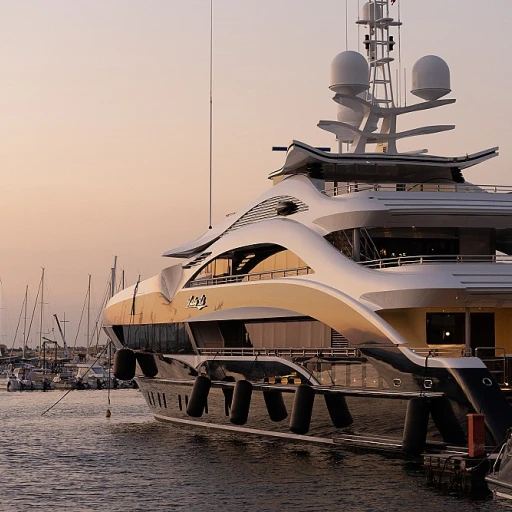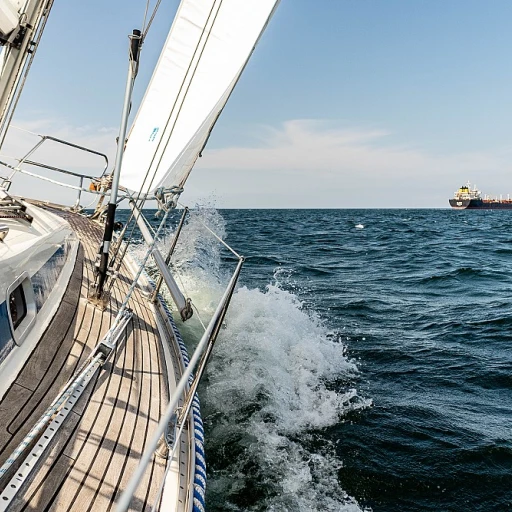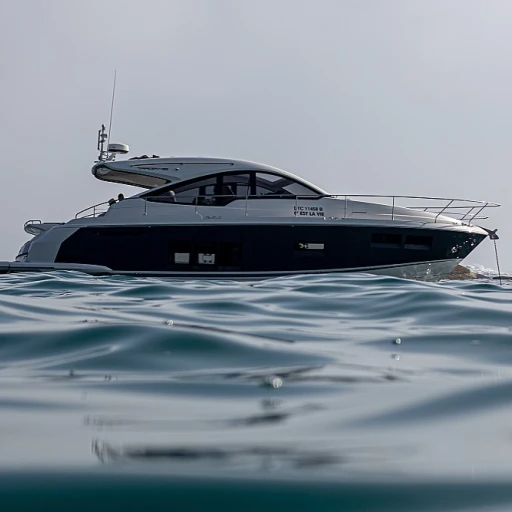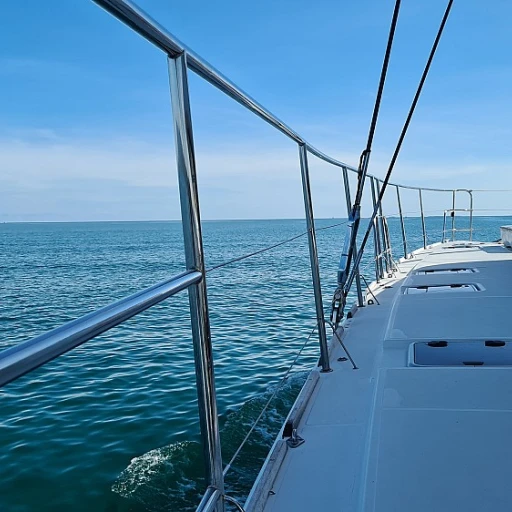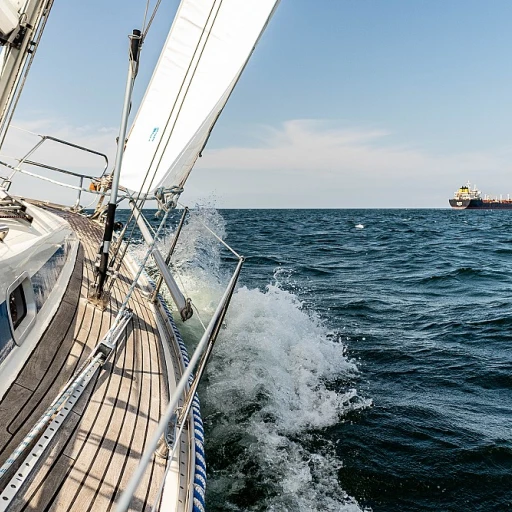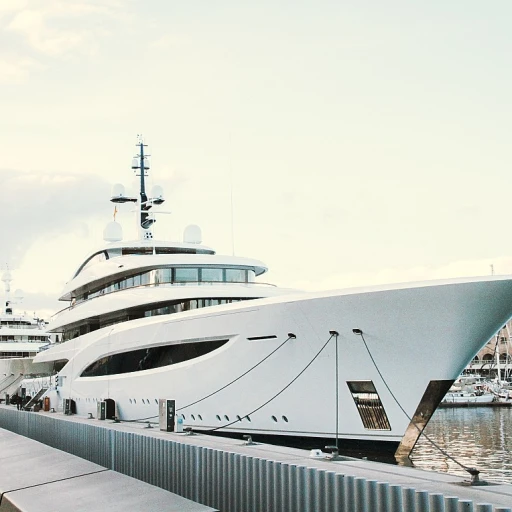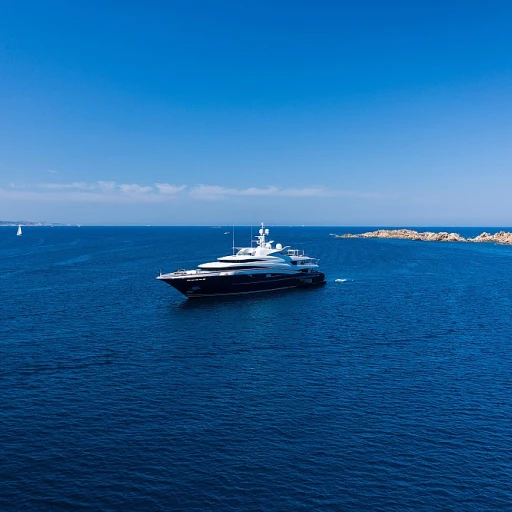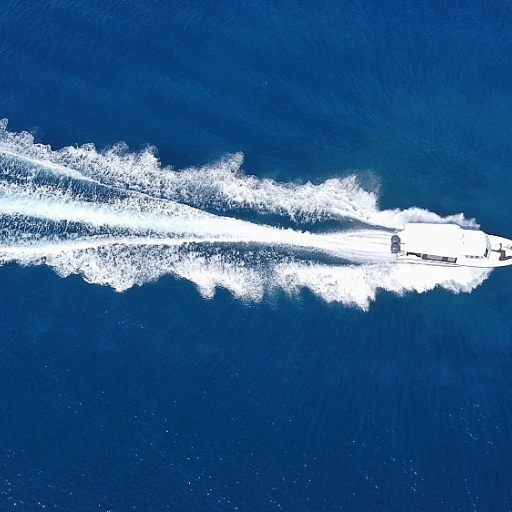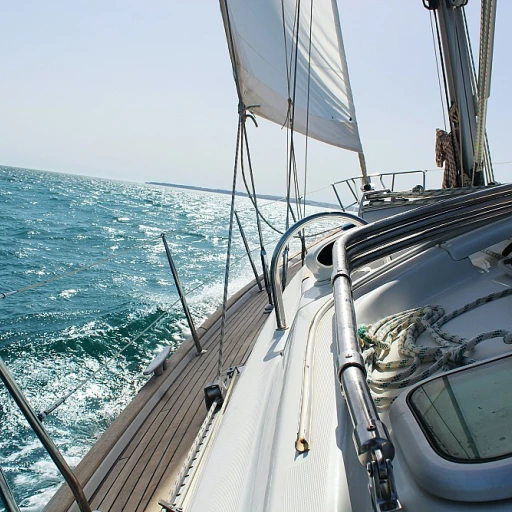
Understanding Your Yacht's Fuel Needs
Comprehending Fuel Requirements of Your Yacht
When planning a journey on the high seas, understanding the fuel needs of your yacht is a fundamental step. Knowing your boat fuel requirements ensures that you aren't left stranded with an empty tank, miles away from the nearest gas dock. The first aspect to consider is your yacht's engine specification and its consequential fuel consumption rate. Different engines consume varying amounts of gas—something that many new enthusiasts don't know initially. This can be particularly important if your yacht is equipped with an LPG or dual-fuel system.
The fuel tank capacity is another critical factor. Familiarize yourself with the size of your yacht's fuel tanks to better gauge how much journey time you have between fuel stops. A larger tank might seem beneficial, but keep in mind that the weight might affect your boat's speed and fuel efficiency. Monitoring your fuel tank's fill level is vital, as keeping too much unvented gas can create safety issues. Always ensure that the tank vent and fuel vent are functioning properly.
If your yacht is equipped with a modern fuel monitoring system, it will help you keep track of your fuel consumption in real-time. Most contemporary systems can provide updates via messages directly to your onboard systems or even to your mobile devices. This keeps you informed about your fuel status while you enjoy the open water. Moreover, maintaining communication with other boats in your fleet or network can provide valuable insights based on shared experiences.
Include a checklist for regularly checking your tank vent and gas locker as part of your preparation. Following such protocols can prevent problems down the line and enhance your yacht experience. Consider reading more about effective yacht storage solutions to ensure your journey remains smooth and well-managed.
Navigating Fuel Availability Along Your Route
Mapping Out Fuel Availability on Your Voyage
When planning your yacht journey, understanding where you can access fuel is crucial to ensuring a smooth trip. Navigating the waters with an adequate fuel supply isn't just about knowing how much your boat needs; it's also about knowing where to fill up along the way. Here's how you can make that process seamless and efficient.- Identify Gas Stations Nearby Waterways: Before setting sail, research locations of fuel docks or marinas with gas stations along your intended route. Knowing these spots can prevent unfortunate surprises when your gas tank starts running low. An app or maritime maps can aid in finding the nearest fuel dock when you're in unfamiliar waters.
- Prepare for Varying Fuel Types: Keep in mind that fuel types may vary depending on the region. For instance, some docks might offer only diesel while others cater to both diesel and LPG, which is crucial for certain engines. Knowing what your yacht requires will help you avoid unnecessary detours.
- Check for Operational Fueling Hours: Fueling boats at the wrong time could lead to delays, as some gas docks have strict operational hours. This is where careful planning plays an important role to maximize efficiency.
- Understand the Role of Fuel Vents and Tanks: It's important to know how your fuel system works, including the tank vent, gas locker, and the appropriate procedure for a proper fuel fill. These are critical aspects to monitor as vent issues could lead to fuel spills or prevent your boat from verifying fill levels accurately.
Evaluating Fuel Quality and Pricing
Assessing Quality and Cost Before Pumping
When preparing to refuel your yacht, it’s crucial to ensure that the fuel you’re about to pump into your boat's gas tank is of high quality and reasonably priced. Navigating through various fuel docks and comparing their offerings can save you from potential engine issues and keep the overall costs in check. One key aspect is to verify that the fuel dock you're considering maintains its tanks and handles fuel responsibly. A poorly maintained gas station with contaminated gas can wreak havoc on your boat fuel system. Check if the dock has a regular service schedule for its fuel tanks, which helps keep contaminants at bay. Also, observe any visible signs of neglect around the fuel dock area, such as excessive rust or fuel spills, which could indicate underlying maintenance issues. Additionally, fuel pricing can vary significantly between locations. While a slight price difference might not seem consequential, the cost can add up, especially if you're refueling a large yacht with multiple fuel tanks. Doing a bit of research or using fuel planning technology with up-to-date pricing information can be beneficial. You’ll not only save money but also streamline your journey by reducing the time spent searching for affordable boat fuel. Consider joining a yachting association or club, which often provides its members with updates and recommendations on reputable fuel docks. Such memberships can also offer exclusive discounts at partnered fuel stations, making it easier to manage your refueling costs effectively. In the end, just like you wouldn’t rush into a real estate deal without due diligence, don’t rush the refueling process. Evaluate the quality and cost of the gas carefully to ensure your yacht remains in top condition and your journeys remain pleasant. For more on maneuvering effectively, check out this resource on how to enhance maneuverability with a bow thruster kit.Utilizing Technology for Efficient Fuel Planning
Embracing Technology for Optimum Fuel Planning
In today’s interconnected world, leveraging technology to streamline your yacht's fuel planning is indispensable. Sophisticated apps and software have become valuable allies for yachters, offering a wealth of information at your fingertips. These tools can effectively manage your fuel tank requirements, identify the nearest fuel dock or gas station, and alert you on the best times to refuel your boat.
Modern systems can automatically calculate your remaining onboard gas, considering your vessel's fuel vent, the current weather conditions on water, and the consumption rate of your yacht’s engine. This forecasting ability helps ensure you don’t run into unexpected "out of gas" scenarios. Investing time to learn to manipulate and interpret these systems will aid in maximizing their utility.
Utilizing communication technology also proves useful. Mariners can benefit from real-time weather updates and messages from fellow boats on the water. Platforms where your member joined communities exist, often share insights on local gas docks, or comment on current gas prices and the quality of boat fuel at different locations. This communal knowledge base helps you to make informed decisions based on real-time data.
For boat owners venturing into uncharted territories, GPS data and AI-driven map applications assist in plotting fuel-efficient routes, ensuring you keep your boat's gas consumption within anticipated bounds. Automatic reminders set based on these electronic blueprints help in timing your routes optimally, thereby avoiding the busy dock hours.
Technology isn't just about improving the logistical aspect; it also brings the benefit of safety. With interconnected devices, you're better poised to alert the coast guard in case of emergencies or fueling mishaps. By tapping into these advanced resources, yachters will keep their journeys both safe and efficient, well-ventilated from surprises.
Considering Environmental and Safety Factors
Minimizing Environmental Impact and Ensuring Safety
When planning your yacht's refueling stops, it's crucial to factor in environmental and safety considerations. These aspects not only help preserve delicate marine ecosystems, but also ensure the well-being of all onboard and around your vessel. Many coastal regions have specific regulations when it comes to fueling boats, led by the guidelines enforced by bodies like the coast guard. It's vital to familiarize yourself with the local rules regarding proper fuel handling and disposal to avoid any fines or environmental repercussions. While at the fuel dock, ensure that the fuel vent is functioning correctly to prevent leakage into the water. A well-maintained fuel vent will help reduce the risk of overflow accidents, which can be both environmentally damaging and hazardous to safety. It’s advisable to inspect the fuel tanks and fuel lockers regularly to check for any wear or damage that could result in leaks. Additionally, using a tank vent can assist in maintaining the pressure in the fuel tank, eliminating the risk of pressure build-up that can cause fuel leaks. Another important aspect is to monitor the fuel fill rate during the refueling process. Keeping a steady and controlled flow reduces the chance of spillage and protects marine life from harmful boat gas and engine oils. When you stop at a gas dock, keep an extra eye on safety measures, such as ensuring all engines are turned off, and no open flames are nearby during fueling. This practice will greatly reduce the risk of fire hazards at the gas station. Finally, learning from experienced yachtsmen can offer valuable insights into efficient and safe refueling practices. Their firsthand experiences at various docks and stations can provide practical advice that can be applied on your journey. The yacht community often shares these tips through platforms where members have joined to exchange knowledge, which can be an invaluable resource as you plan your trip. By considering these factors, you can navigate both a successful and responsible fueling strategy for your marine adventures.Learning from Experienced Yachters
Gaining Insights from Seasoned Yachters
As you embark on your journey to find the best stops for refueling your yacht, consider tapping into the wealth of knowledge held by experienced yachters. These seasoned navigators offer invaluable “sea tested” insights that go beyond the boat engine mechanics or the specifics of the fuel tank systems. Their firsthand experiences can guide you through fuel availability and quality challenges along the route.
One crucial aspect is to understand the nuances at fuel docks. Often, these stops have different operational specifics, from understanding how the fuel vent operates to knowing the significance of a gas locker on the dock. Experienced yachters will help you better grasp how to properly fill the tank, keep the gas locked securely, and ensure you’re at the correct fuel dock suited for your boat.
Safety also becomes a priority when dealing with the technicalities of a fueling boat. Seasoned boaters are in tune with preventive measures and best practices to avoid mishaps during the refueling time. For instance, they emphasize closing the fuel tank vent when not in use and ensuring the fuel fill connections are secure. Listening to their stories can save you trouble and potentially costly errors.
Moreover, don’t overlook seasonal nuances conveyed in messages passed via yachting communities or the kind of weather patterns typically discussed among members who’ve joined journeys similar to your planned route. Such insights can prepare you well ahead.
Finally, respecting environmental regulations and coastal safety standards, often highlighted by experienced boaters, ensures that you contribute to preserving marine life while using the resources responsibly. These practices are particularly reinforced by the guidance of institutions like the coast guard.


